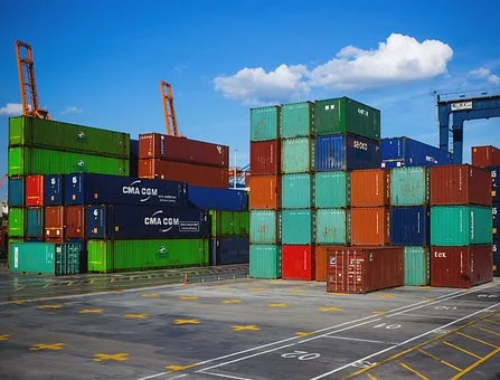Economic Watch: Rapid growth expected for major indicators as China's economy stabilizes

Photo taken on Feb. 16, 2017 shows a container terminal of Chuanshan Port in Ningbo City, east China's Zhejiang Province. China's gross domestic product expanded 6.9 percent year on year in the first half of the year to about 38.15 trillion yuan (5.62 trillion U.S. dollars), data from the National Bureau of Statistics (NBS) showed Monday.
China's industrial output, investment and consumption are widely expected to be relatively high, despite milder growth in July, as the economy continues to show resilience.
While analysts expect slightly muted July data compared with June, they believe an improving global environment, expanding manufacturing activity and strong consumers will offset a property investment deceleration.
The Chinese government will release monthly data on major economic indicators on Monday.
Industrial output in July is expected to remain strong, despite moderating from June, according to statistics on manufacturing, power use and steel output, said CITIC Securities chief economist Zhu Jianfang.
He estimated July's industrial output growth at 7.2 percent year on year, a bit slower than 7.6 percent in June.
China's manufacturing purchasing managers' index (PMI) has stayed above 51 for 10 months in a row, official data showed. A reading above 50 indicates expansion.
In July, the official manufacturing PMI came in at 51.4, down from 51.7 in June, but another private survey showed its manufacturing PMI hit a four-month high of 51.1, up from 50.4 in June.
There were also signs of increased power use and steel output. Coal consumption by six of the country's largest power firms rose 10.6 percent year on year in July, up by 5 percentage points from June.
Major steel producers saw crude steel output grow 10.7 percent year on year last month, up by 2.4 percentage points from June.
While industrial output will be under pressure from the cooling property sector in the short term, a better global economy should put a floor under any slide in growth in the second half, Zhu predicted.
Fixed-asset investment, a key driver of China's economy, is expected to post a mild slowdown, as infrastructure investment usually loses some steam in July as a result of hot weather and slowing fiscal expenditures.
China Merchants Securities chief macroeconomic analyst Xie Yaxuan predicted fixed-asset investment to grow 8.4 percent year on year in the first seven months, compared with 8.6 percent in the first half.
Despite the slightly lower rate, investment by private capital and that in manufacturing is likely to cushion the downward movement of property investment growth, according to Bank of Communications chief economist Lian Ping.
For consumption, the warming auto market and increasing incomes should support robust growth in retail sales for July, analysts said.
Some 1.97 million vehicles were sold in July, up 6.2 percent year on year, accelerating from a 4.5-percent rise in June, according to data from the China Association of Automobile Manufacturers.
The country's average per capita disposable income grew 7.3 percent year on year in the first half after adjusting for inflation, outpacing the national GDP growth.
Zhu predicted retail sales growth in July to ease to 10.7 percent from 11 percent in June, the fastest increase since December 2015, noting that slackening property sales could restrain consumption of furniture and home appliances.
Lian said China's consumption growth is typically milder in July.
High temperatures and floods could have an impact on tourism and entertainment, he explained.
China posted forecast-beating GDP growth of 6.9 percent in the second quarter of the year, flat with the previous quarter and above the government's annual growth target of around 6.5 percent.
The International Monetary Fund last month revised up China's growth forecast for 2017 and 2018 to 6.7 percent and 6.4 percent, respectively.
(Source: xinhuanet.com)



























 沪公网安备31010402003309号
沪公网安备31010402003309号